Last year, I failed to extract any language data out of my IMDB data dump, because LOOK AT THIS NONSENSE:
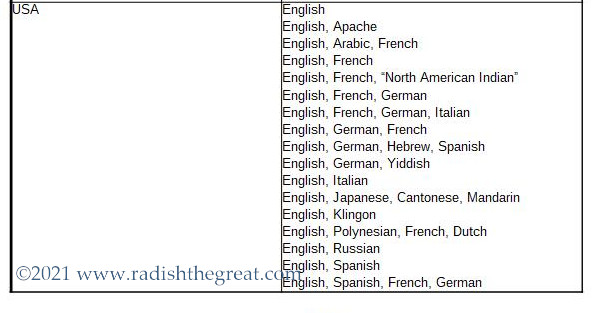
This year, I have chosen to ignore all the scenes that include six words of additional language used to set a mood or develop a character, for example answering a phone call from Berlin in German to indicate the character once lived there: Every movie gets one language. I made exceptions for movies with strong Bavarian dialect, Nollywood (characters slip between English and Yoruba and Igbo within the same breath), and a Puerto Rican documentary film that Netflix told me was in English but mostly wasn’t. Bastards.
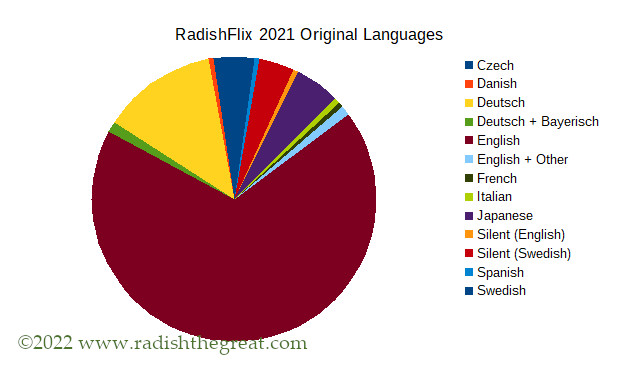
The giant brown wedge is not a surprise, with over a hundred US and UK films on the list. I am surprised that all the silent films except one are Swedish; I have an impression that I watch a lot of German and American silent films. The data doesn’t back me up.
In the next chart, “mU” means “mit Untertiteln“, or “with subtitles”. At home I have the subtitles on as much as possible so I can eat chips without missing dialog. In the data I include them only when I don’t understand the original language. I also rolled the silent films into their title card language.
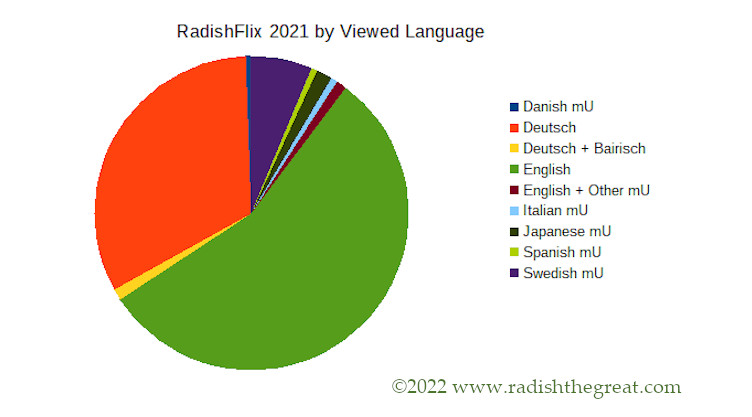
Again, no surprises here. German television broadcasts foreign films (which includes American films) with German voice actors, instead of original versions.
To Dub Or Not To Dub, that is a question
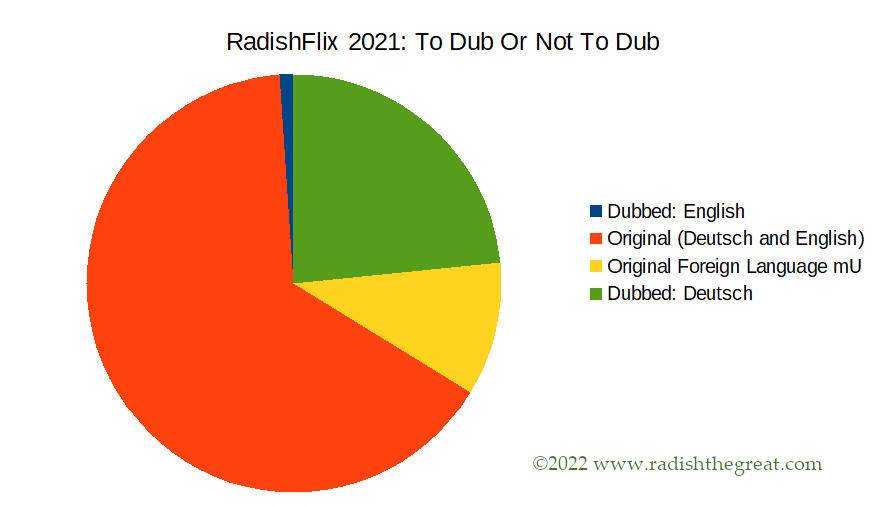
I see the majority of films with their original audio, whether it be English, German, or something else. Only about a fifth or the films were dubbed in German. But what’s that blue bit? Which films were dubbed in English?
This is so crazy, I can hardly believe it: Both of the English-dubbed films came from West Germany. Der Formel Eins Film and Erinnerungen an der Zukunft both had US releases, and those were the versions I saw (in Amazon and YouTube, respectively).
Finally, a deeper dive into that green wedge:
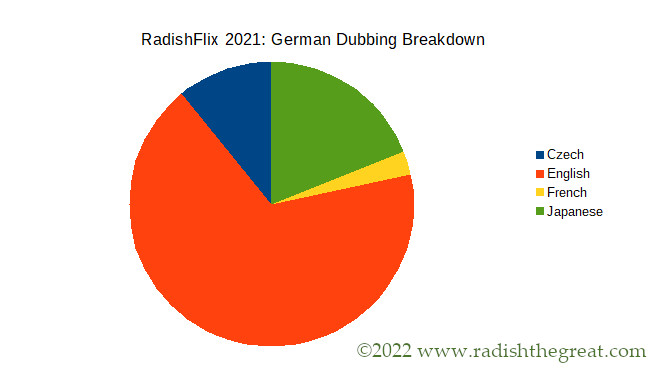
Except for the Czech children’s fairy tales at Christmas time, I don’t appear to take much advantage of having a second language I can use to watch foreign films (the Japanese films are all from the Toho Godzilla franchise).
OTOH, I kind of hated most of the French films I tried to watch in 2020.
The number I really wanted: 25 of the 175 films I saw last year were German dubs of US and UK films, which is not quite half of the 59 films I saw in German.
Will this analysis change how select movies to view in the future? Hard to say.



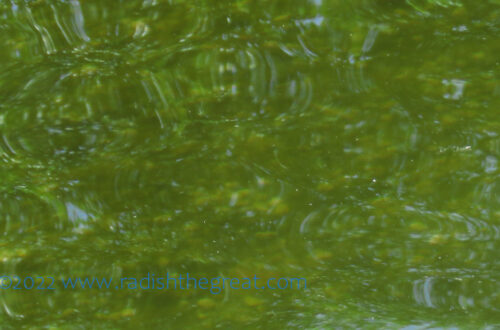


2 Comments on “RadishFlix 2021: The language analysis”